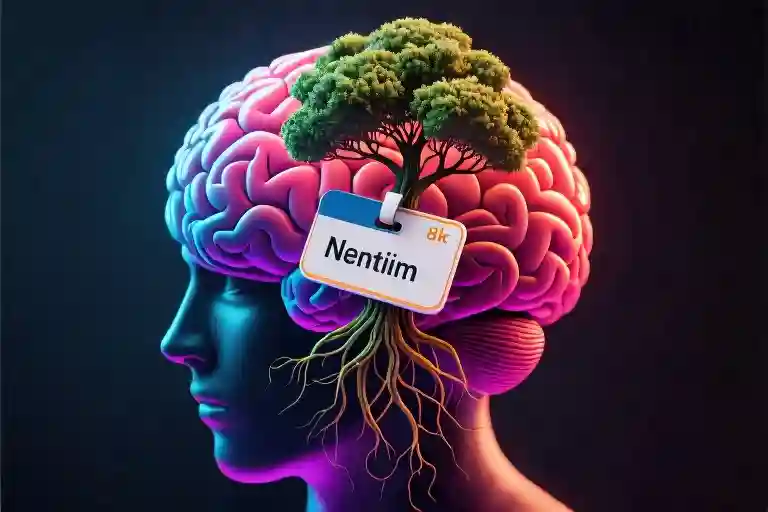Have you ever made a decision with absolute confidence, only to later realize some invisible force had been pulling your strings all along? You’re not alone. Studies show that nearly 70% of consumer decisions are influenced by subconscious triggers we never consciously notice. This phenomenon isn’t just limited to shopping carts—it shapes our workplace behaviors, social interactions, and even personal relationships.
Take the curious case of mother turkeys, a classic example from Robert Cialdini’s research on psychological triggers. These birds will fiercely protect their chicks when they hear the characteristic “cheep-cheep” sound. But here’s the startling part: they’ll shower the same maternal care on a stuffed polecat (their natural predator) if it makes that noise, while ignoring actual chicks that remain silent. The implications for human behavior are both amusing and unsettling.
We like to think of ourselves as rational creatures, far removed from such mechanical responses. Yet modern life constantly proves otherwise. That “limited time offer” tag that made you buy unnecessary items? The unquestioning trust we place in someone wearing a white coat? These are our version of the turkey’s “cheep”—automatic behavior patterns wired into our psychology through evolution.
Cialdini’s levers of influence theory identifies six primary triggers that bypass our conscious reasoning:
- Reciprocity: The unshakable feeling we should return favors
- Commitment: Our desire to stay consistent with previous choices
- Social Proof: Following the crowd for safety cues
- Authority: Deferring to perceived experts
- Scarcity: Reacting urgently to disappearing opportunities
- Liking: Being swayed by people we find appealing
These psychological triggers aren’t inherently bad—they help us navigate complex environments efficiently. The problem arises when marketers, negotiators, or even well-meaning friends learn to pull these levers deliberately. Suddenly, that friendly barista remembering your name (liking) or the “only 2 left in stock” notification (scarcity) become subtle forces guiding your behavior.
Consider how often you’ve:
- Stayed loyal to a brand after receiving free samples (reciprocity)
- Continued using a service because you’d already signed up (commitment)
- Chosen a restaurant because it was crowded (social proof)
These automatic responses save mental energy, but they also create vulnerabilities. The first step toward wiser decisions isn’t eliminating these shortcuts—that’s nearly impossible—but recognizing when they’re being activated. Like noticing the strings on a puppet, awareness gives you the choice to dance along or cut yourself free.
Next time you feel that sudden urgency to act, pause and ask: “Am I responding to reality, or to someone’s carefully designed psychological trigger?” That moment of reflection might be all that stands between you and becoming the human equivalent of a turkey mothering a stuffed predator.
The Hidden Triggers That Guide Us
We like to think of ourselves as rational beings, carefully weighing options before making decisions. Yet much of our daily behavior operates on autopilot, guided by subtle cues we rarely notice. This automatic response system evolved as an efficiency tool – allowing us to navigate complex social environments without constant conscious analysis. But these mental shortcuts come with an ironic vulnerability: the more confident we feel in our control, the more susceptible we become to invisible influences.
The Turkey That Loved Its Predator
Behavioral scientists demonstrated this phenomenon through a revealing experiment with mother turkeys. These protective birds will fiercely attack anything threatening their chicks – except when they hear the distinctive “cheep-cheep” sound of their offspring. Researchers discovered that even when placing a stuffed polecat (a natural turkey predator) near the nest, the mother turkey would nurture the enemy if it emitted that single sound. Remove the cheeping, and she’d immediately attack.
This fixed action pattern exists across species. Male stickleback fish will aggressively defend their territory against anything red-bottomed (mimicking rival males). European robins will attack clusters of red feathers while ignoring realistic wooden models lacking the color trigger. These creatures aren’t thinking – they’re responding to specific environmental switches that activate preprogrammed behaviors.
Our Human Triggers
We operate with surprisingly similar automatic responses. Consider these everyday examples:
- The Price Tag Effect: A $59 t-shirt seems reasonably priced beside a “discounted from $199” label, even if we’d never pay $199. The higher number anchors our perception.
- Authority Hypnosis: People will follow instructions from someone in a lab coat, even when told to administer what they believe are dangerous electric shocks (as demonstrated in the famous Milgram experiments).
- Social Proof: Crowded restaurants attract more customers because “if others chose it, it must be good” – even when the crowd was artificially created.
These psychological triggers – what Robert Cialdini calls “levers of influence” – work because they tap into evolutionary wiring. Just as the turkey’s cheep-detector bypasses rational analysis, our brains developed shortcuts for quick decisions:
| Trigger | Evolutionary Purpose | Modern Exploitation |
|---|---|---|
| Authority | Follow tribal leaders for survival | Fake titles boosting credibility |
| Scarcity | Value rare resources | “Limited time offers” creating urgency |
| Social Proof | Safety in numbers | Manufactured online reviews |
When Automatic Responses Betray Us
The system works beautifully… until it doesn’t. Problems arise when:
- Contexts change (what helped ancestors survive now leaves us vulnerable to manipulation)
- Triggers get faked (like that “cheeping” polecat)
- We mistake efficiency for control (assuming we’re immune precisely when we’re most susceptible)
Recognizing these automatic patterns isn’t about eliminating them – that would be impossible and counterproductive. Instead, it’s about developing what psychologists call “strategic awareness” – knowing when to pause and engage our deliberate thinking systems. In the next section, we’ll explore the six primary levers of influence and how they manifest in workplaces, stores, and digital spaces.
Key Insight: Our most confident decisions often rely on the least conscious thought. The first step toward better choices is recognizing when we’re running on autopilot.
The Six Hidden Levers: Dissecting Influence
We like to think of ourselves as rational beings, carefully weighing pros and cons before making decisions. Yet much like mother turkeys responding to a simple ‘cheep’ sound, we humans have our own automatic triggers that bypass conscious thought. Robert Cialdini’s research reveals six psychological levers that routinely shape our choices – often without our awareness. Understanding these mechanisms isn’t about becoming paranoid; it’s about developing informed agency in a world filled with subtle persuasion attempts.
The Reciprocity Trap: Why Free Samples Work Too Well
That complimentary mint with your restaurant bill isn’t just hospitality – it’s one of the oldest influence tools in human interaction. The reciprocity principle suggests we feel compelled to return favors, even when unsolicited. Marketing teams leverage this through:
- Free trial periods that create psychological debt
- Unexpected upgrades increasing tip percentages by 20-30%
- Personalized gifts from sales representatives
Real-world example: A study showed waitstaff who gave customers an extra mint increased tips by 3%. Those who paused, then gave a second mint with a personal comment (‘For you nice folks’) saw tips jump 23%.
Scarcity’s Siren Call: Limited Edition Anxiety
Our brains assign disproportionate value to things perceived as rare. This explains why:
- ‘Only 3 left!’ notifications boost conversion rates by 189%
- Time-sensitive offers create urgency even for non-essential items
- Exclusive access promotions trigger FOMO (fear of missing out)
Cognitive quirk: Researchers found people rate cookies as tasting better when taken from a nearly empty jar versus an abundant supply – even when identical.
Authority’s Silent Command: White Coats and Titles
We’re conditioned from childhood to respect authority figures, making this lever particularly potent:
- Medical professionals using branded stethoscopes increase prescription compliance
- Financial advisors displaying credentials receive less challenge to recommendations
- Uniformed personnel gain automatic trust (even when impersonators)
Protection tip: When facing authority pressure, ask ‘What evidence would make you reconsider this position?’ This maintains respect while encouraging critical evaluation.
Liking: The Friendly Manipulation
We say yes more often to people we like, which explains:
- Mirroring techniques used by skilled negotiators
- Compliment strategies before sales pitches
- Shared interests disclosures in networking
Defense strategy: Separate the person from the proposal. Ask yourself ‘Would I agree if someone else made this offer?’
Social Proof: The Herd Instinct
Especially powerful in uncertain situations, we look to others’ behavior as guidance:
- Restaurants artificially creating waitlists to appear popular
- Testimonials showing ‘Most purchased’ items
- Crowdfunding campaigns displaying contributor counts
Reality check: During emergencies, the ‘bystander effect’ shows everyone waiting for others to act first. Be the one who breaks the pattern.
Commitment Consistency: The Foot-in-the-Door
Small initial commitments create psychological pressure to maintain consistency:
- ‘Just try it’ requests leading to larger purchases
- Public pledges increasing follow-through
- Free webinars creating obligation for paid courses
Countermove: Regularly ask ‘Would I make this choice again today?’ rather than feeling bound by past decisions.
Recognizing the Levers in Action
These influence tools aren’t inherently bad – they streamline social interactions and decision-making. The danger comes when they operate beneath our awareness. Tomorrow’s coffee meeting or online checkout process likely contains several of these triggers. Now that you can name them, you’ve taken the first step toward more intentional choices.
The Invisible Battlefield: Where Levers of Influence Play Out
We like to believe our daily choices are carefully considered decisions, but the reality is far more fascinating. Those psychological triggers Robert Cialdini identified don’t just exist in textbooks—they’re actively shaping your behavior right now, from supermarket aisles to boardroom meetings. Let’s explore three real-world arenas where these levers of influence operate with startling efficiency.
Grocery Stores: Masters of Social Proof
Ever noticed how certain products always seem to be at eye level? That’s no accident. Retailers strategically place higher-margin items where your gaze naturally falls, leveraging our tendency to equate visibility with popularity—a classic example of social proof in action.
Consider the “bestseller” tags you see on bookstore displays. Research shows these labels can increase purchases by 32%, not because the book is objectively better, but because our brains shortcut: “If others chose it, it must be good.” This same principle explains why:
- Stores place full baskets near checkout (“Look what others bought!”)
- Menu items get “chef’s recommendation” stars
- Apps display “5,000 downloads this week” counters
Defense tactic: Pause and ask, “Would I want this if nobody else owned it?” That simple question disrupts the automatic social proof response.
Workplace Dynamics: The Anchoring Effect in Meetings
In conference rooms worldwide, an invisible force shapes decisions within the first minutes. When the first speaker proposes a budget figure or project timeline, that number becomes an anchor—a mental reference point that skews subsequent discussion, even if the initial suggestion was arbitrary.
Studies of corporate meetings reveal:
- Teams discussing salary increases averaged 2% higher when the first suggestion was 8% vs. 3%
- Project timelines extended by 23% when initial estimates were pessimistic
- 72% of participants couldn’t recall who set the anchor later
This explains why savvy negotiators always speak first, and why you might feel oddly committed to mediocre ideas after they’ve been voiced aloud.
Defense tactic: Write down your independent assessment before hearing others’ opinions. Physical notes create a counter-anchor for your mind.
Social Media: The Dopamine-Driven Commitment Trap
That little heart icon isn’t just cute—it’s one of the most potent commitment and consistency engines ever designed. Every like, share, or comment creates micro-commitments that shape your future behavior:
- Liking a fitness post makes you 40% more likely to interact with similar content
- Sharing political content increases partisan bias (we justify our public stance)
- Even passive scrolling creates “phantom engagement”—the illusion of participation
Platforms exploit this by:
- Graying out the like button after you tap it (visual consistency)
- Showing “You’re the first to like this!” (commitment amplification)
- Suggesting “Complete your profile 100%” (completion bias)
Defense tactic: Audit your last 20 interactions. Notice patterns in what you unconsciously commit to through tiny engagements.
Why These Tactics Work (And When They Fail)
These psychological triggers thrive because they exploit evolutionary shortcuts:
- Social proof saves energy in uncertain situations
- Anchoring helps process complex numerical data
- Commitment consistency maintains social harmony
But they backfire when:
- Overused (constant “limited time” alerts breed skepticism)
- Mismatched with context (authority figures discussing unrelated topics)
- Detected consciously (once you see the mechanism, its power diminishes)
Turning Awareness Into Armor
Start noticing these patterns today:
- In stores: Observe product placement and signage
- At work: Track who speaks first in decisions
- Online: Monitor your impulse to interact
The real power isn’t in avoiding these levers—that’s impossible—but in recognizing when they’re serving you versus steering you. As you become more aware, you’ll start seeing these invisible forces everywhere… and that’s when you truly begin choosing rather than being chosen for.
Building Your Defense System Against Hidden Influences
We’ve uncovered how psychological triggers like scarcity cues or authority symbols can hijack our decision-making. Now it’s time to equip ourselves with practical countermeasures. This isn’t about paranoia—it’s about developing the same level of awareness that lets you spot rain clouds before getting caught in a storm.
The 24-Hour Rule: Why Your Brain Needs a Pause Button
Neuroscience reveals something fascinating: when we encounter triggers like “limited-time offers,” our amygdala (the brain’s alarm system) reacts within milliseconds, while rational evaluation by the prefrontal cortex takes significantly longer. This biological delay explains why “sleeping on it” remains one of history’s most enduring decision-making strategies.
Try this today:
- For purchases over $100/$500 (set your own threshold)
- When receiving urgent requests (“This offer expires tonight!”)
- Before agreeing to commitments that trigger discomfort
Create a simple template: “I appreciate this opportunity. Let me review the details and respond by [specific date].” Notice how often pressure dissolves when you reclaim timeline control.
The Authority Detox Kit
We naturally defer to doctors in white coats or executives with impressive titles—that’s hardwired. But you can install mental checks:
- The Credential Check:
- “What specific expertise does this person have on this exact matter?”
- Example: A celebrity endorsing financial products vs. a certified financial planner
- The Uniform Test:
- Would this recommendation hold weight if the person wore jeans and a t-shirt?
- Hospitals now have “No White Coats” policies to reduce patient stress
- The Reverse Question:
- “What would someone with opposing credentials say about this?”
Your Weekly Influence Audit
Build this five-minute habit every Sunday:
| Category | Questions to Ask | My Pattern This Week |
|---|---|---|
| Purchases | Did discounts actually save me money? | |
| Work | Whose opinions swayed me unduly? | |
| Social | Did likes/comments alter my preferences? |
Pro tip: Track not just decisions but physical reactions—that gut clench when a salesperson says “only one left” reveals your personal trigger points.
Real-World Resistance Tactics
Scenario: A contractor insists you must sign today for a “special government rebate.”
Response script:
- “Help me understand—is this rebate truly expiring, or is today your company’s paperwork deadline?” (Clarifies scarcity)
- “I’d like to verify the program details on the official website.” (Asserts independent verification)
- “Let’s schedule a follow-up after I’ve compared options.” (Maintains control)
Notice what’s happening here: You’re not rejecting, but restructuring the interaction on your terms. Most ethical professionals won’t object—those who do reveal their manipulation intent.
The Meta-Awareness Training
Develop your psychological trigger radar with these daily mini-exercises:
- Commercial Deconstruction: During TV ads, mute and predict the persuasion tactics before hearing them
- Menu Forensics: At restaurants, identify how layout and descriptions guide your choices
- Email Triage: Scan your inbox for subject lines that create false urgency (“Your account will be closed!”)
Like muscle memory, this practice soon lets you spot levers of influence in real-time rather than in hindsight.
When Automatic Responses Serve You
Remember, these mental shortcuts aren’t flaws—they’re evolutionary tools. The goal isn’t to eliminate them but to choose when to engage:
✅ Trust your gut on:
- Physical safety signals
- Long-term relationship red flags
- Ethical violations
⏸️ Pause automatic responses for:
- Financial commitments
- Changes to routines
- Requests that trigger obligation feelings
This balanced approach honors our psychological design while preventing exploitation. As you practice these defenses, you’ll find something remarkable happens—the very awareness of influence tactics begins neutralizing their power, leaving you freer to make choices aligned with your true priorities.
The Ultimate Freedom: Seeing the Levers That Move You
“The greatest freedom is to choose after seeing the chains.” This closing thought lingers as we reflect on the invisible forces shaping our daily decisions. What began as an exploration of automatic behaviors—from mother turkeys nurturing stuffed predators to humans obeying price tags—culminates in an empowering realization: awareness transforms influence from manipulation to tool.
Your Personal Leverage Toolkit
Now that we’ve mapped the six psychological triggers (reciprocity, commitment, social proof, authority, scarcity, and liking), the real work begins. Consider these three daily practices to reclaim agency:
- The 3-Second Gut Check
When faced with urgent decisions (“Limited stock!”), pause to ask:
- What specific evidence supports this claim?
- Would I want this without the [scarcity/authority/social proof] element?
- The Authority Interrogation
Next time someone invokes credentials, try this script:
“That expertise is helpful. Could you walk me through how this specifically applies to my situation?” This maintains respect while activating critical thinking. - Weekly Influence Audits
Every Sunday, review:
- One purchase where triggers overcame logic
- One conversation where you yielded unnecessarily
- One instance where you successfully resisted manipulation
From Theory to Tactical Living
Remember the turkey experiment? Its lesson wasn’t about animal stupidity, but about the evolutionary wisdom of automatic responses—until they’re exploited. Your new awareness works similarly:
- Efficiency: Spotting “50% OFF” tags no longer hijacks your prefrontal cortex
- Empowerment: Recognizing a boss’s “Because I said so” as an authority lever lets you respond strategically
- Ethical Advantage: You can now use these principles constructively, like framing team goals with social proof
Continue Your Journey
For those ready to go deeper, scan the QR code below to access:
- Interactive worksheets to track personal triggers
- Audio guides for recognizing persuasive language patterns
- A community forum to share real-world case studies
True autonomy isn’t about eliminating influences—that’s impossible. It’s about discerning which levers to pull, which to disable, and which to simply acknowledge with a smile as you walk by.





